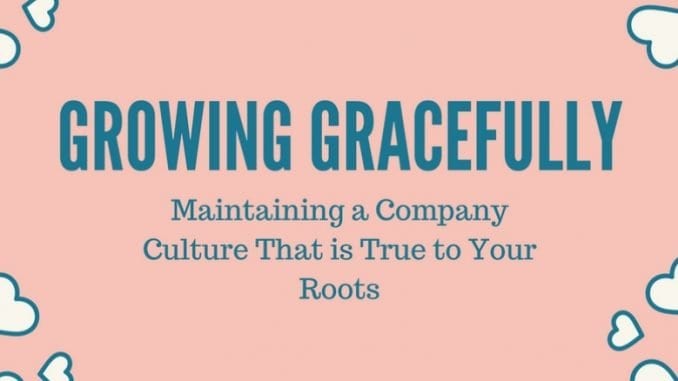
We hear terms like “mom and pop shops” or “family-like business” all the time, but is this actually a good thing? In this series, we’ll explore what it means to grow gracefully, as well as the differences between a family vibe and a professional setting in the café.
BY LUKE DAUGHERTY
SPECIAL TO BARISTA MAGAZINE
Volume 2
One of the most difficult but important aspects of a company’s culture is the character of its relationships. Are they warm, open, and familial? Or cold and closed? Put in those stark terms, one seems obviously better. Unfortunately, it’s not uncommon for employees to experience diminished morale, rights violations, or outright abuse in both contexts. While violations by large corporations are well-known, familial settings can be equally damaging. In fact, a recent study found that almost twice as many employees claimed they’d received abuse in a small-business situations compared to larger ones.
In this series, we’re exploring how to find the happy medium between these extremes. Many longtime coffee professionals and business owners with a passion for company culture and leadership development have weighed in from their experiences in order to help us chart a course with six keys to success. In the first part of this series, we looked at the first two keys. Today, we’ll look at the next two.
Key #3: Realize what you’re getting into.
Before you can articulate a clear vision for the type of culture you want in your shop, you should learn what cultures look like in real companies. It seems obvious, but in fact many owners or managers simply base their plans on vague ideas. In reality, there are as many definitions for what constitutes a familial or business-like culture as there are employees. Take the time to understand the benefits, the potential problems, and the distorted perceptions that people have about the culture you’re trying to build.
There are many advantages to creating a familial culture in your company. For 2017 Coffee Masters winner Erika Vonie, her early experience in a family-owned, relational business at Ultimo Coffee in Philadelphia was foundational. “The reason why I work in coffee and why I have the career that I cultivated is because of Aaron and Elizabeth Ultimo (the company owners),” she says. To this day, Erika thinks of Aaron like a father, and of many others she has since worked with in the industry as family members.
“Coffee has always brought all types of people together,” says 2016 USBC champion Lem Butler, a new business owner himself. “And what I’ve seen is a level of respect that keeps them together.” He emphasizes the best aspects of a familial culture: mutual respect, support, and a sense of community. These are the very features of the “mom and pop” culture he inherited—and will seek to maintain—when his company, Black & White Roasters in Wake Forest, N.C., bought out a family-owned business last year. “Wake Forest is a small town. Everyone knows each other. There’s a huge community vibe and we didn’t want to disrupt that.”
When problems are overlooked, however, relationships can easily turn dysfunctional. “The family aspect of companies has been used against me to keep me in line with arbitrary company dynamics,” says Erika. “Whatever policies make sense to the family dynamic are malleable to specific situations, and have definitely been used to guilt or shame me.” Her own experiences with verbal abuse, emotional manipulation, and unclear or deceptive policies, in fact, led her to move on from a previous role.
Situations like Erika’s are among the reasons why, for some, a more business-like focus is helpful. “I think that whole sense of being a family and having limited infrastructure is limiting and a bit too internally focused,” says Eva Attia, director of retail operations at Portland Roasting Coffee. In the best sense, those looking for familial cultures are “looking for people who care about them, who have their best interests in mind, who want to grow and develop them, and maybe aren’t so rigid. But you have to have some structure, and you have to have guard rails and policies in place to hold people accountable to fair standards and actually invest in people,” Eva says. And, she adds, these structures don’t mean you have to “lose the element of fun and spontaneity” that employees associate with smaller companies.
Still, a more business-like culture has its limitations, particularly in the less controlled environment of a hospitality-oriented job. “Sometimes that rigidity of strict deadlines in coffee aren’t always attainable,” says Rachel Lehman, president and cofounder of Crema Coffee Roasters in Nashville, Tenn. “Sometimes when you’re a general manager you feel like you’re just putting out fires all the time.”
Rachel, whose business partner and husband Ben Lehman comes from a corporate background, is quick to acknowledge the benefits of his more structured approach, but she’s careful to not let it go too far. “At the end of the day, we’re running a business; but that business is filled with people,” she says. Structures should be built to support humans, in other words, not robots.
“I saw one restaurant where they treated the baristas like line cooks,” recalls Lem, who observed a wide variety of business styles in his time as a wholesale rep for Counter Culture Coffee. “The turnover rate was super high in that restaurant. The baristas felt like they weren’t connected to the people they were serving.”
As with any endeavor, having the clearest picture of all possibilities will help you better shape the culture in the healthiest way possible.
Key #4: Clarify staff expectations.
Forming your vision is only the beginning. From there, communication is key. And good communication begins with listening. “Ideally you’re pulling in disparate points of view, other’s opinions, and aiming for a more collaborative approach,” says Eva. Make the whole process one of dialog, in which you’re crafting your vision as you hear from others both inside and outside of your company. Not only that, she says, but make sure you’re intentionally developing leaders who can carry out and communicate expectations as well.
Informal dialog, however, is only the beginning of effective communication within your organization. “One of the first things I did at Crema was to create an employee handbook and policies,” says Rachel. “I needed some structure to set the benchmark for what’s appropriate and inappropriate.” She speaks from experience: Three weeks into her role as an assistant manager at a previous job, she was forced to wing it with no written policies while dealing with sexual harassment allegations from several of her female staff toward her boss, who was eventually fired.
“How can you help someone understand ways to improve if they don’t have a benchmark for what’s OK and what’s not OK?” Rachel asks. Handbooks with clear policies help to communicate expectations, and they aren’t just for well-established companies, but for any organization, regardless of how familial it is seeking to be. At Crema, this means more than just sexual harassment policies. It encompasses benefits plans, time off, and employee wellness policies that include paid trips to the gym, yoga, or massage. These are examples of using more “corporate” structures to actually communicate that you’re “caring for the whole person,” as Rachel puts it.
Wherever you are in the life of your company, it’s important to start somewhere in clarifying expectations. Maybe you missed crafting a manual early on, but that doesn’t mean you can’t begin the process of clarifying expectations. For Lem at Black & White, it was the simple first act of providing job descriptions where none existed under previous ownership. For you, it might mean something different. Again, begin with dialog, so you can assess the immediate needs of your business.
If you’ve made it this far in the process, you’ve built a good foundation. You’ve established a vision based on awareness of yourself, of others, and of the range of possibilities. You’ve outlined clear policies and lines of communication. There are just two more keys for us to look at in our next and final volume in this series.
 ABOUT THE AUTHOR
ABOUT THE AUTHOR
Luke Daugherty has been in the coffee industry for more than 13 years, working as a barista, roaster, and café manager along the way, all the while growing more intrigued with this lovely beverage we all can’t get enough of. He’s an SCA-certified green coffee buyer, and he lives with his wife and three children in Louisville, Ky.

